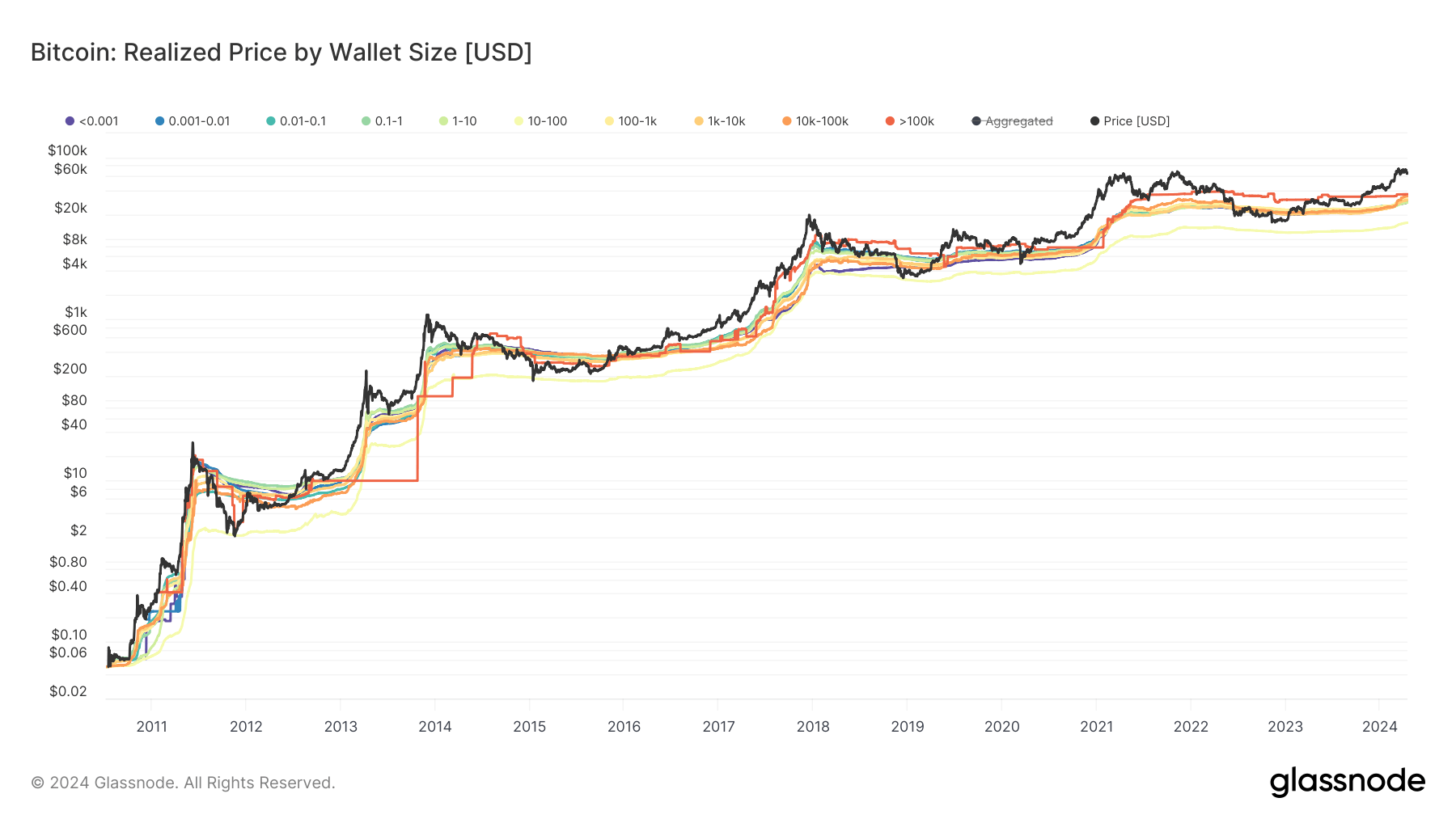Go here to Read this Fast! ETH holders turn to Kelexo amid Bitcoin’s $71k rally
Originally appeared here:
ETH holders turn to Kelexo amid Bitcoin’s $71k rally
Go here to Read this Fast! ETH holders turn to Kelexo amid Bitcoin’s $71k rally
Originally appeared here:
ETH holders turn to Kelexo amid Bitcoin’s $71k rally
Go here to Read this Fast! Bitcoin dips to $65k as Fezoo positions itself against Binance and OKX
Originally appeared here:
Bitcoin dips to $65k as Fezoo positions itself against Binance and OKX


Glassnode data shows that OG Bitcoin holders, or Fish (yellow), those holding between 1 – 10 BTC, still have the lowest realized price by quite some margin at just $15,630. Compared to Whales, whose realized price is currently $35,290, this indicates Fish have the lowest average cost per Bitcoin out of all holders. Further, any […]
The post OG Bitcoin holders or ‘King’ Fish retain $15k cost basis after buying the dip appeared first on CryptoSlate.
Originally appeared here:
OG Bitcoin holders or ‘King’ Fish retain $15k cost basis after buying the dip
Miners have been investing in more efficient machines to tackle post-halving financial stress.
Miners’ sell-offs increased in recent months.
With less than three days to go for the pivotal B
The post Bitcoin halving prediction: Why the next 3 days are crucial for miners appeared first on AMBCrypto.
Go here to Read this Fast! Bitcoin halving prediction: Why the next 3 days are crucial for miners
Originally appeared here:
Bitcoin halving prediction: Why the next 3 days are crucial for miners
In addition to the supermassive black hole at the center of our galaxy, the Milky Way also serves as home to smaller stellar black holes that form when a massive star collapses. Scientists believe there are 100 million stellar black holes in our galaxy alone, but most of them have yet to be discovered. The ones that had already been found are, on average, around 10 times the size of our sun, with the biggest one reaching 21 solar masses. Thanks to the information collected by the European Space Agency’s Gaia mission, though, scientists have discovered a stellar black hole that’s 33 times the size of our sun, making it the biggest one of its kind we’ve ever seen in our galaxy so far. It’s also relatively close to our planet at around 1,926 light-years away.
Gaia BH3, as it’s now called, was first noticed by a team of ESA scientists poring over data from the mission to look for anything unusual. An old giant star from the nearby Aquila constellation caught their attention with its wobbling, leading to the discovery that it was orbiting a massive black hole. BH3 was hard to find despite being so close — it’s now the second closest known black hole to our planet — because it doesn’t have celestial bodies close enough that could feed it matter and make it light up in X-ray telescopes. Before its discovery, we’d only found black holes of comparable size in distant galaxies.
The ESA team used data from ground-based telescopes like the European Southern Observatory to confirm the size of the newly discovered celestial body. They also published a paper with preliminary findings before they release a more detailed one in 2025, so that their peers could start studying Gaia BH3. For now, what they know is that the star orbiting it has very few elements heavier than hydrogen and helium, and since stellar pairs tend to have similar compositions, the star that collapsed to form BH3 could’ve been the same.
Scientists have long believed that it’s the metal-poor stars that can create high-mass black holes after they collapse, because they lose less mass in their lifetimes. In other words, they’d theoretically still have a lot of materials left by the time of their death to form a massive black hole. This was apparently the first evidence we’ve found that links metal-poor stars with massive stellar black holes, and it’s also proof that older giant stars developed differently than the newer ones we see in our galaxy.
We’ll most likely see more detailed studies about binary systems and stellar black holes that use data from BH3 and its companion star in the future. The ESA believes that BH3’s discovery is just the beginning, and it’s going to be the focus of more investigations as we seek to unravel the mysteries of the universe.
This article originally appeared on Engadget at https://www.engadget.com/esas-gaia-mission-discovers-the-biggest-stellar-black-hole-in-our-galaxy-yet-085753239.html?src=rss
Chicago, United States, April 17th, 2024, Chainwire Liquid Mercury, a leading crypto trading technology provider, announced today that it is providing a request for quote (RFQ) platform to GFO-X, the UK’s first regulated and centrally cleared trading venue dedicated to digital assets derivatives. Institutional traders will be able to source deep liquidity for trading listed […]
The post Liquid Mercury Partners with GFO-X to Provide RFQ Platform for Trading Crypto Derivatives appeared first on CoinJournal.
Originally appeared here:
Liquid Mercury Partners with GFO-X to Provide RFQ Platform for Trading Crypto Derivatives
Go here to Read this Fast! Blockchain sleuth uncovers identity of PrismaFi’s hacker, who stole $11m
Originally appeared here:
Blockchain sleuth uncovers identity of PrismaFi’s hacker, who stole $11m
Go here to Read this Fast! SOL, DOGE show modest gains as Borroe Finance steals the spotlight
Originally appeared here:
SOL, DOGE show modest gains as Borroe Finance steals the spotlight
Originally appeared here:
EY launches Ethereum-based blockchain solution to streamline business contracts
Go here to Read this Fast! Biblical floods hit Dubai, disrupting Blockchain Life and Token2049
Originally appeared here:
Biblical floods hit Dubai, disrupting Blockchain Life and Token2049